This article has been reviewed according to Science X's editorial process and policies. Editors have highlighted the following attributes while ensuring the content's credibility:
fact-checked
reputable news agency
proofread
Air pollution cloaks eastern US for a second day. Here's why there is so much smoke
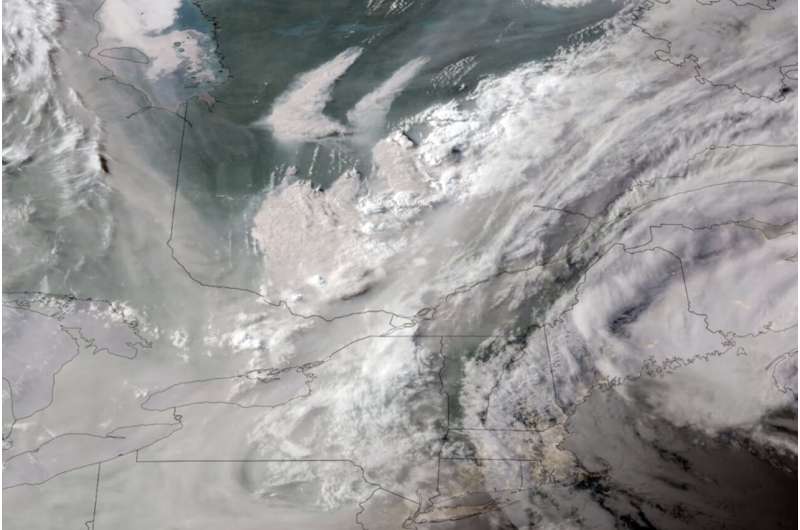
Intense smoke blanketed the northeastern United States for a second day Wednesday, turning the air a yellowish gray and prompting warnings for people to stay inside and keep windows closed. The smoke was flowing from dozens of wildfires in several Canadian provinces.
Much of the air was in the "unhealthy or worse categories in areas from the mid-Atlantic through the Northeast and parts of the Upper Great Lakes," according to an advisory issued by the Environmental Protection Agency Wednesday night.
U.S. authorities issued air quality alerts in multiple regions and smoke was expected to persist for days.
Conditions were especially bad in parts of central New York, where the airborne soot was at hazardous levels. In New York City, officials on Wednesday said everyone should stay indoors. The conditions arrived late Tuesday afternoon, obscuring views of New Jersey across the Hudson River.
Here's a closer look at what's happening and what's in the smoke:
GENESIS OF THE SMOKE
Unusually hot, dry weather that wouldn't stop gave rise to the wildfires.
"The month of May was just off the charts—record warm in much of Canada," said Eric James, a modeling expert with the Cooperative Institute for Research in Environmental Science at the University of Colorado, who is also with the National Oceanic and Atmospheric Administration.
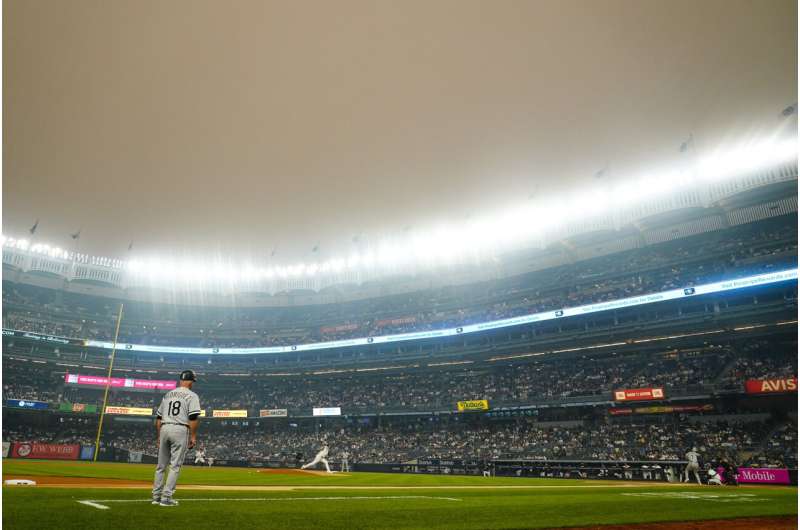
A warming planet will produce hotter and longer heat waves, making for bigger, smokier fires, according to Joel Thornton, professor and chair of the department of atmospheric sciences at the University of Washington.
The Quebec-area fires are big and relatively close, about 500 to 600 miles (roughly 800 to 970 kilometers) from Rhode Island and they followed wildfires in Nova Scotia.
"I don't remember fires of this scale in the last 10 years," James said of the Quebec blazes.
Smoke from fires in western Canada have been drifting into the United States for weeks. But it's recent fires in Quebec that have produced the dangerous east coast haze.
WHY IS SMOKE REACHING SO FAR AWAY?
Strong winds high up in the atmosphere can transport smoke long distances and it's common for large, violent fires to create unhealthy conditions hundreds of miles away from where forests are burning.
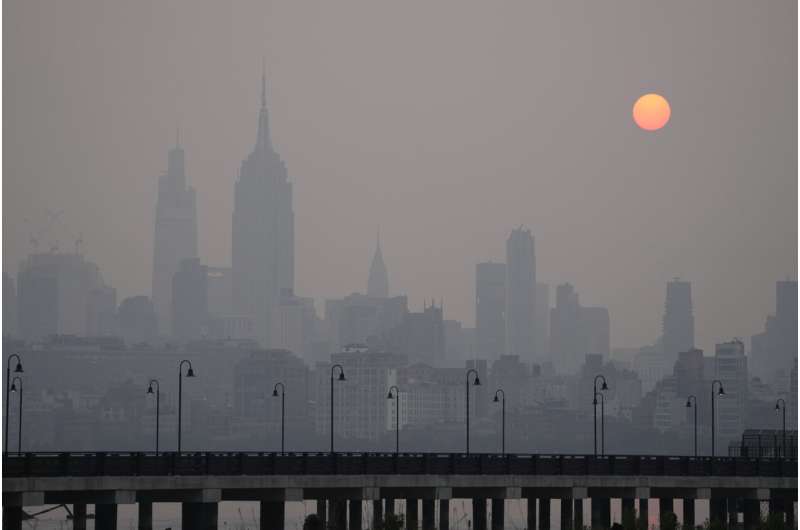
But the right mix of circumstances had to align for the smoke to blanket major U.S. cities: A dry, hot spring set the stage. Then weather did the rest, said Bob Henson, meteorologist with Yale Climate Change Connections.
In Canada, air is circulating counterclockwise around a low pressure system near Nova Scotia. That sends air south over the fires in Quebec. There the air picks up smoke, and then turns east over New York state, carrying smoke to the eastern seaboard.
"It's a simple matter of trajectory," Henson said. "The smoke goes where the wind takes it."
This wind pattern isn't particularly rare. But the confluence of events is.
"The timing of this weather patterns is unfortunately overlapping with a situation that was ripe for large fires," Thornton said.
Weather patterns change and the worst conditions should only last a day or two. Some smoke, however, could linger for a week or more, according to James.

WHAT IS SMOKE ACTUALLY?
Although smoke seems familiar, it is actually made up of a complex mix of shapes, from round to corkscrew-shaped under the microscope.
"It's not just one sort of chemical," said Rima Habre, an expert in air quality and exposure science at the University of Southern California. "It could have gases and carbons and toxic metals." As it travels, Habre said, it also changes and can contain ozone.
Much of what we see in the air and measure is small particles, or PM 2.5. These are so small they can get deep into the lungs, where oxygen enters your circulation.
"Mostly we worry about inflammation in the lungs," Habre said, from these high levels of pollution. But with climate change amping up fires, increasingly, she said, she is worried about broader numbers of people being exposed to less extreme smoke for weeks or months.
-
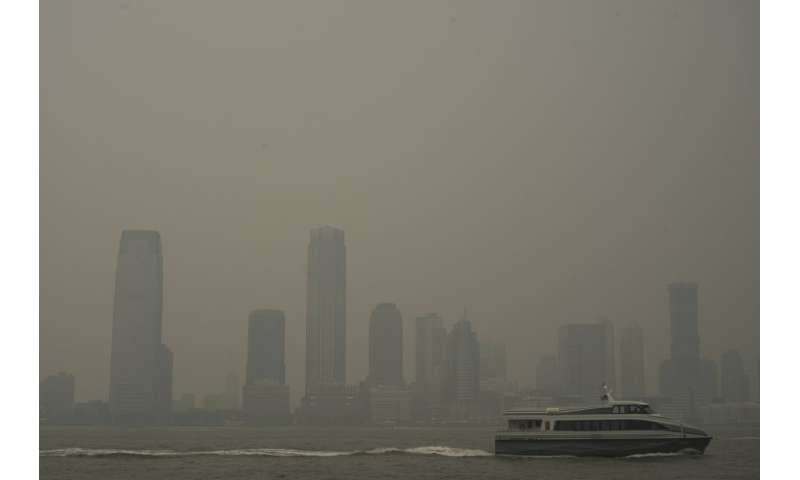
Buildings in Jersey City, N.J. are partially obscured by smoke from Canadian wildfires as a ferry travels up the Hudson River, seen from the Manhattan borough of New York on Tuesday, June 6, 2023. Credit: AP Photo/Patrick Sison -
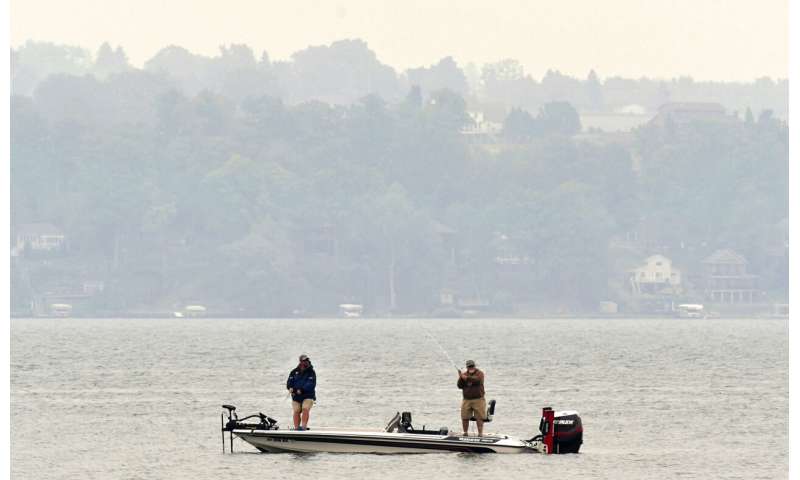
Fishermen, surrounded by a smoky haze, spend an afternoon on Owasco Lake, Tuesday, June 6, 2023, in Owasco, N.Y. Smoke from Canada's wildfires has been moving into the United States since last month. The most recent fires near Quebec have been burning for at least several days. Credit: Kevin Rivoli/The Citizen via AP -
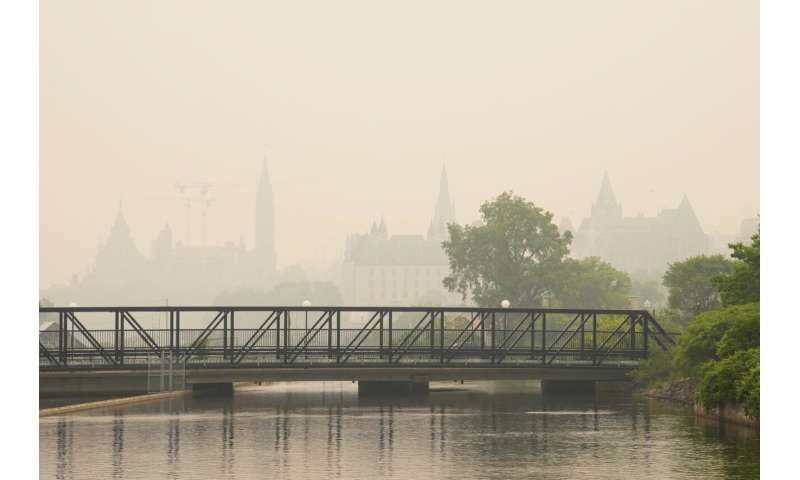
Smoke from wildfires hangs over Parliament Hill in Ottawa on Tuesday, June 6, 2023. Credit: Sean Kilpatrick/The Canadian Press via AP -
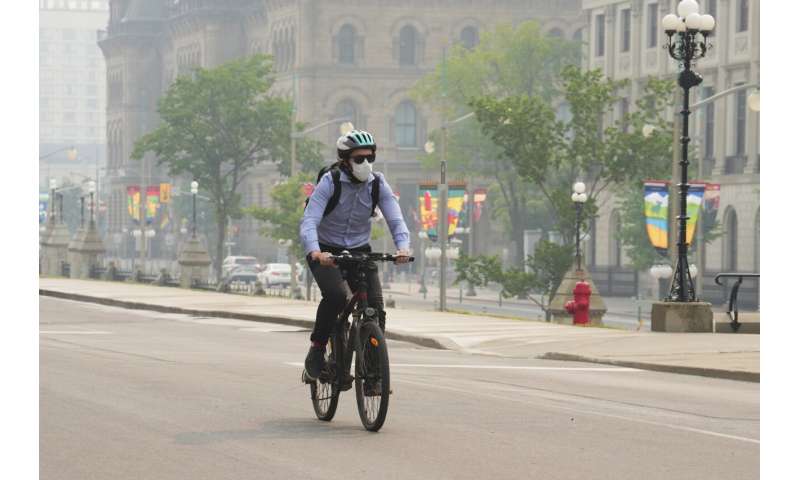
A cyclist wears a mask due to poor air quality conditions as smoke from wildfires in Ontario and Quebec hangs over Ottawa on Tuesday, June 6, 2023. Credit: Sean Kilpatrick/The Canadian Press via AP -
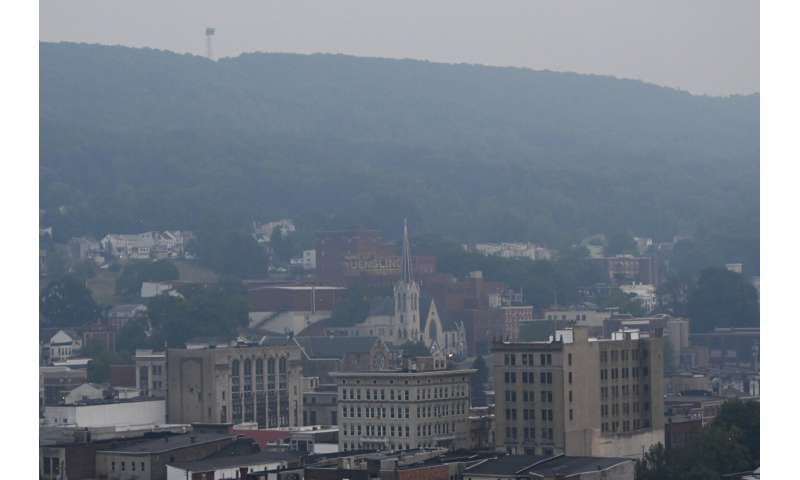
The city of Pottsville, Pa., is surrounded by smoke and haze from Canadian wildfires on Tuesday evening, June 6, 2023. Credit: Jacqueline Dormer/ Republican-Herald via AP -
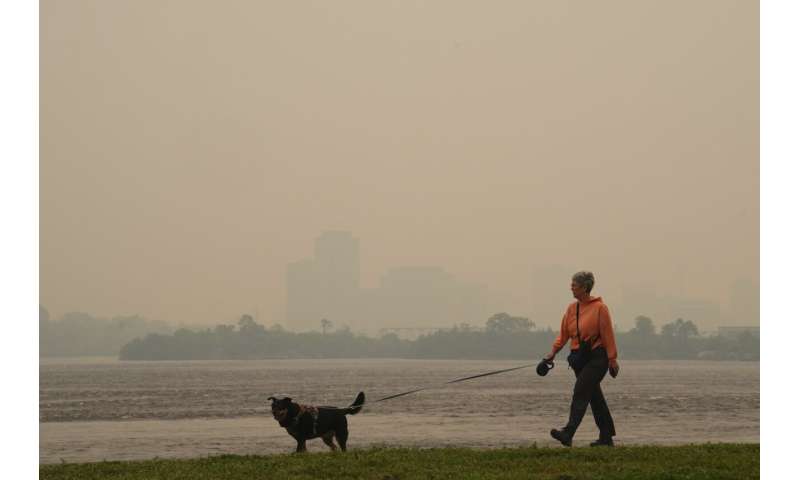
A woman walks her dog along the Ottawa River in Ottawa as smoke from wildfires obscures Gatineau, Que., in the distance on Tuesday, June 6, 2023. Credit: Sean Kilpatrick/The Canadian Press via AP -
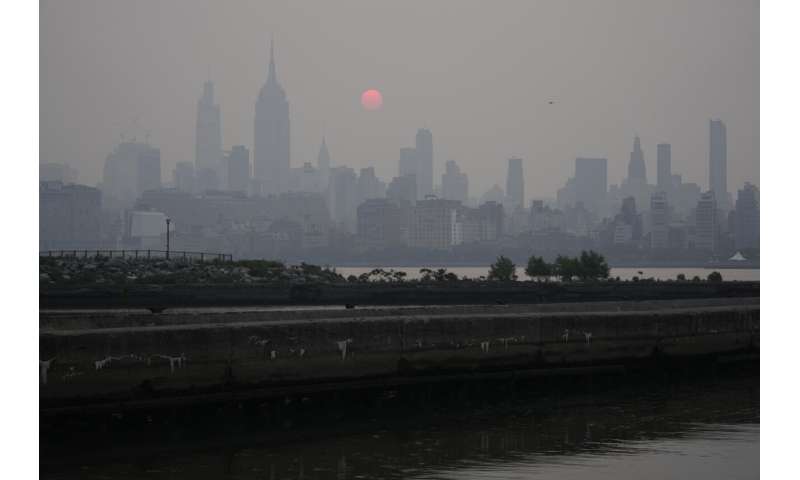
The sun rises over a hazy New York City skyline as seen from Jersey City, N.J., Wednesday, June 7, 2023. Intense Canadian wildfires are blanketing the northeastern U.S. in a dystopian haze, turning the air acrid, the sky yellowish gray and prompting warnings for vulnerable populations to stay inside. Credit: AP Photo/Seth Wenig
"Most healthy adults and children will recover quickly from smoke exposure and will not have long-lasting health effects," according to the EPA advisory. But that is less true for a large category of people, including children whose lungs are still developing, older adults, and people with lung diseases, such as asthma and chronic obstructive pulmonary disease.
Stay inside, keeping your doors, windows and fireplaces shut, is the advice. Air conditioning on the recirculation setting can help filter out some particles, and air filters can remove many more.
© 2023 The Associated Press. All rights reserved. This material may not be published, broadcast, rewritten or redistributed without permission.




















